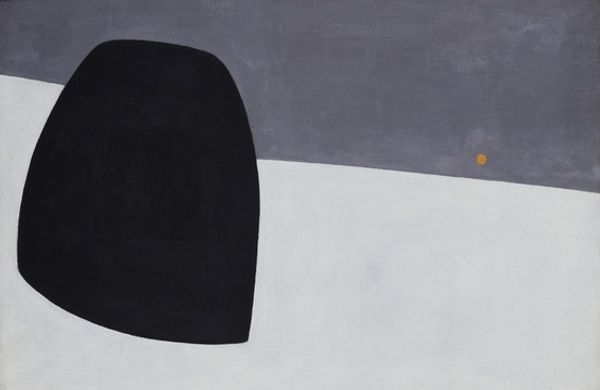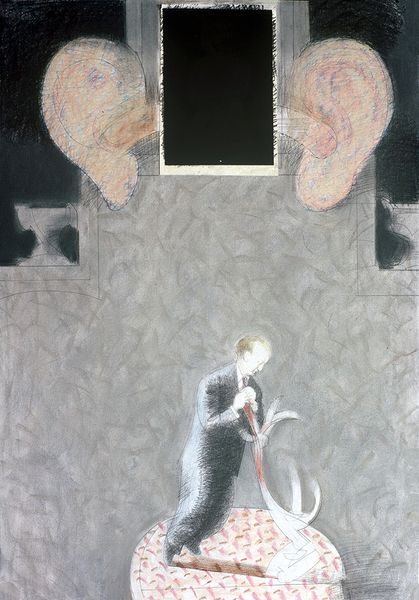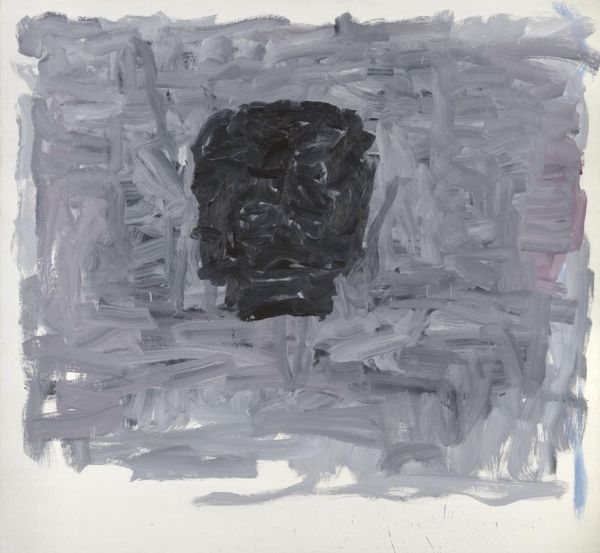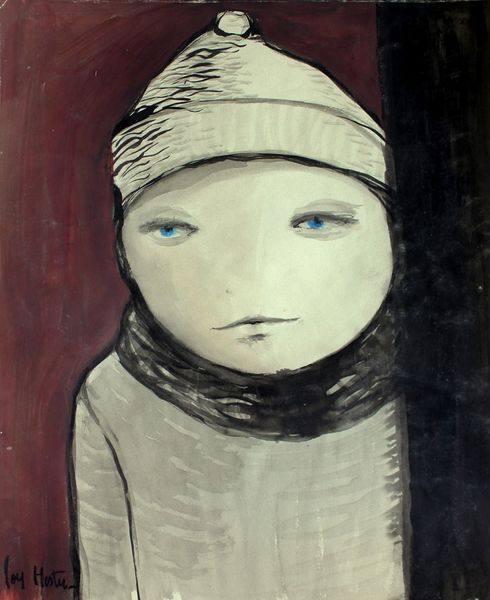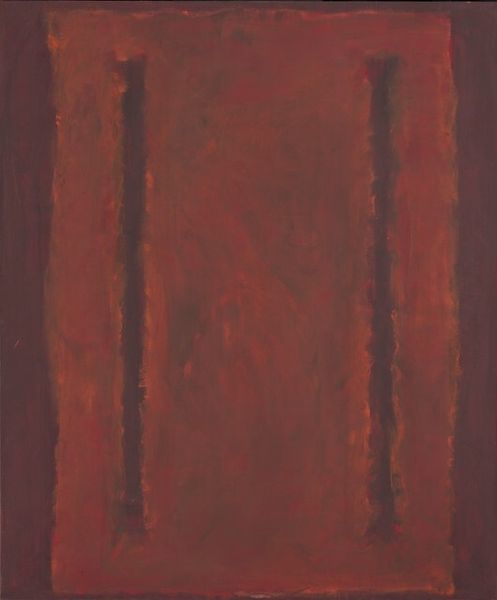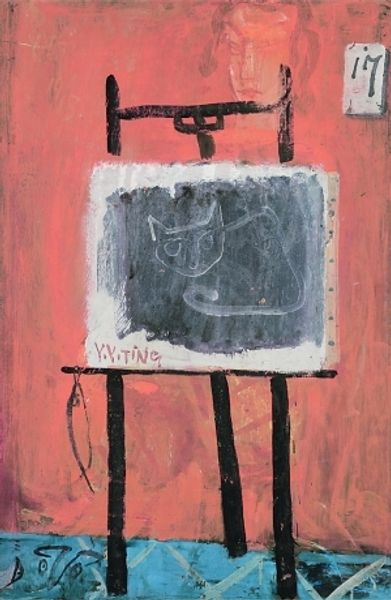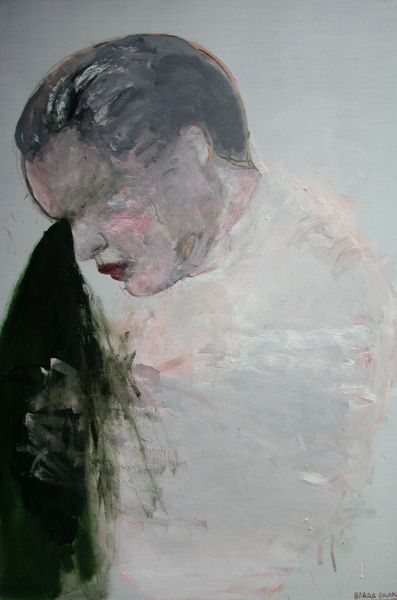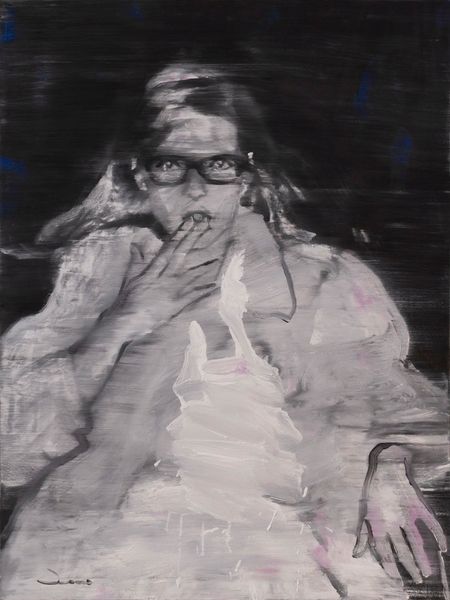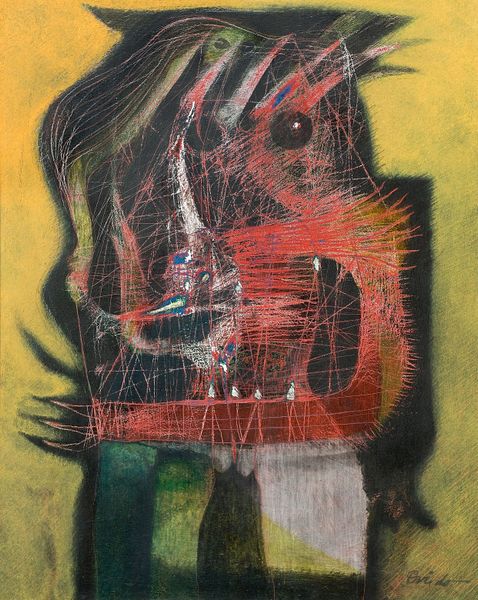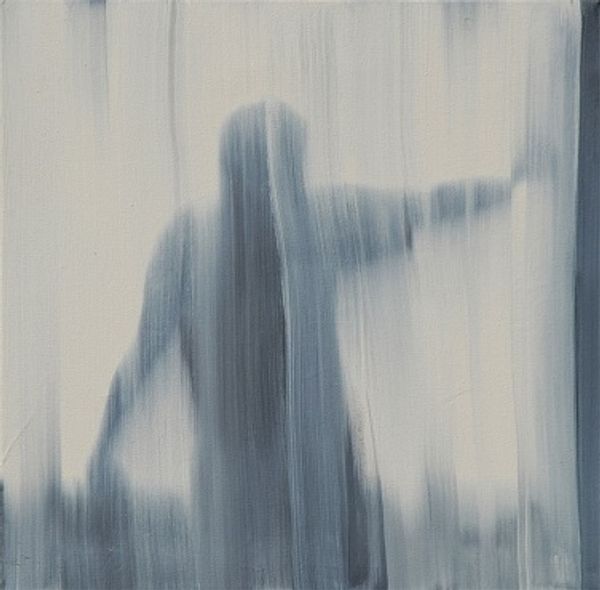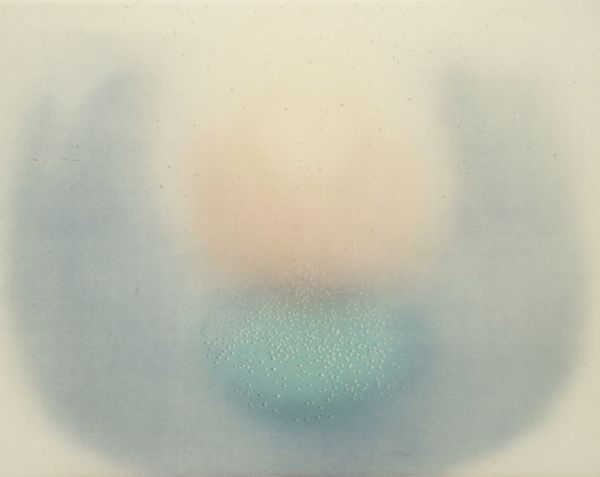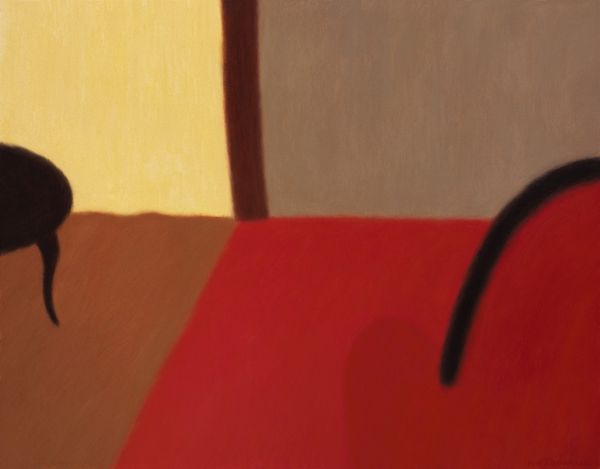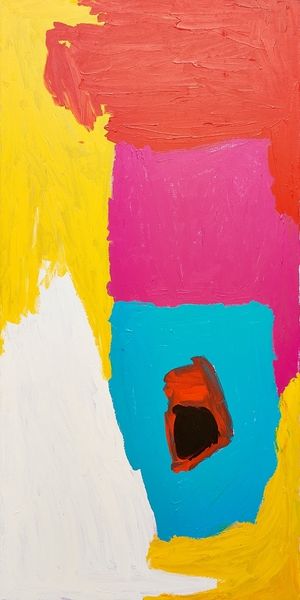
painting, oil-paint
#
portrait
#
contemporary
#
painting
#
oil-paint
#
figuration
#
social-realism
Copyright: Zhang Xiaogang,Fair Use
Curator: I find this piece quite haunting. There’s a stillness, an almost spectral quality, to the figure depicted. Editor: And the spectral quality works, especially when considering the context of Zhang Xiaogang’s "Bloodline" series. We’re looking at a portrait executed with oil paint, and these paintings reflect China’s Cultural Revolution and its lasting impact on family and identity. Curator: Yes, that carefully chosen medium, oil, lends it a timeless, almost photographic feel. Did the artist want to give this painting that vintage photographic tone, with a grey background against this red visage, and red thread? Editor: The visual language certainly borrows from official portraiture prevalent during that period. What’s interesting is how Zhang undermines it. Look at the faces – their apparent sameness. They speak to a loss of individuality within a system that demands conformity. Curator: Conformity produced, of course, through material means: state-controlled publications and education, propaganda posters, the very clothes people were expected to wear. One can imagine this painting also reflects upon that kind of making and control. Editor: Exactly. And the slight variations are where resistance lies. That thin red line barely connecting the subject, suggests family ties but they appear very tenuous, easily broken. It reflects, perhaps, the fractured nature of relationships during the Cultural Revolution when family members were often encouraged to denounce one another for political transgressions. The muted palette further emphasizes this sense of loss and repression. It seems Xiaogang sought the painting as a record of what had happened at a certain time and a cultural statement reflecting back on China at the time. Curator: Considering that "Bloodline" references not just the concept of familial relations but is presented as a form of “official portrait,” how much did it need to adhere to the social standards of painting to reach as many people as possible? It also feels like Zhang’s own exploration with painting materials and processes may have enabled many ordinary families who couldn't engage with high art to relate to "Bloodline." Editor: That's a crucial point. Zhang Xiaogang navigated a complex socio-political terrain, and the painting acted as both a mirror reflecting state narratives, and also as a critique thereof. It encouraged a space to contemplate a conflicted time through familiar aesthetic means. Curator: A complicated intersection of history and fabrication indeed. A compelling commentary on the human experience within a defined system. Editor: Indeed. The way in which historical and cultural currents flow through an artist's work creates enduring power.
Comments
No comments
Be the first to comment and join the conversation on the ultimate creative platform.

